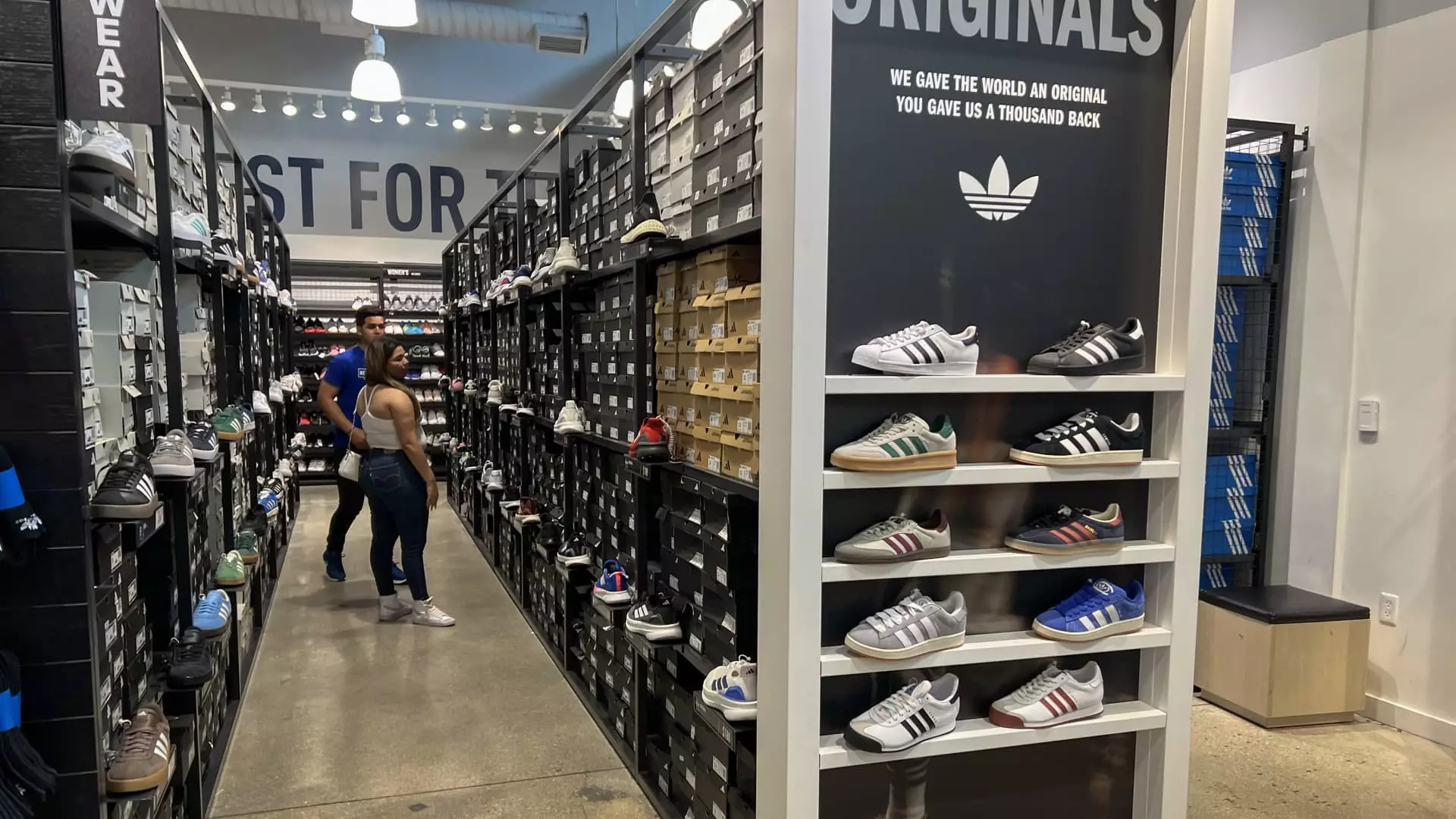In an increasingly tumultuous global trade environment, Adidas, one of the leading sportswear brands, is grappling with the ramifications of U.S. tariffs imposed during the Trump administration. While brand strength and profitability seemed promising, evidenced by a remarkable 155% leap in net income for the first quarter, the looming cloud of tariffs casts a long shadow over Adidas’ future strategies and pricing policies. It’s alarming how one significant decision made within the political arena can ripple through the economy and swathes of corporations, generating instability and unpredictable outcomes.
A Fragile Pricing Structure
Adidas’ acknowledgment that tariff hikes will eventually force price increases is an essential theme in today’s economic discussions. The company has articulated its vulnerability, stating that while it currently depends on sourcing from lower-cost nations, these tariffs threaten to push prices upward across the board for U.S. consumers. This statement isn’t just a passing comment; it signals a strategic dilemma intrinsic to a global business that strives for affordability but faces increased operational costs. When a corporation like Adidas hesitates to boisterously reaffirm their sales outlook, it reveals the volatility governing consumer behavior, especially in the wake of economic uncertainty.
The Economic Ripple Effects
The terror of increased costs isn’t restricted to Adidas; it resonates across the retail spectrum. National and international retailers—ranging from low-cost providers like Temu to high-end luxury brands such as Hermès—are collectively reeling under the same pressures. An escalation in prices could lead to a consumer backlash where individuals become resistant to spending, fundamentally altering the shopping landscape. The reality is stark: amidst prosperity, the intense pressure from tariffs could push consumers to reconsider their purchasing decisions. If Adidas’ strategies suffer due to higher prices, how many other brands will follow suit?
A Strategy Stifled
It is disheartening to see Adidas admit that it cannot produce a significant portion of its products in the U.S. despite the domestic workforce’s potential. The flexible supply chains that companies have mastered are to blame for the disconnect as they search for cost-effective solutions abroad. The statement reveals a broader issue: the struggle for American manufacturing to compete against overseas production. The dependence on factories in Vietnam and Cambodia only crystallizes the challenges faced by the brand and additional woes stemming from multi-layered tariffs that can exceed 40%.
Branding in a Time of Crisis
On a more uplifting note, it’s worth highlighting Adidas’ capacity to bounce back from its previous partnership with the controversial figure Ye. The fact that the firm could still post double-digit sales growth despite this tarnished alliance is commendable. Adidas has shown resilience, but the emerging tariff environment could threaten the brand’s momentum. Could this looming risk ultimately tarnish a name that has worked hard to reclaim its value through careful branding and marketing? There’s a thin line between resilience and complacency, and now is not the time for Adidas to lose its edge.
The Dilemma of Corporate Responsibility
At the epicenter of the discussion lies a stark contradiction: how do ambitious corporations like Adidas tread the fine line between profitability and ethical consumerism? If companies are forced to hike prices, what kind of message does that send? Are they sacrificing the purchasing power of the average American for the sake of corporate profit? Adidas’ plea for clarity on future tariffs mentions that consumer demand will be affected, and with it, the very essence of their corporate responsibility comes into question.
In this scenario, the balance shifts precariously. The brand may become a reflection of wider economic disparities if it continues to grapple with trade complexities without a concrete plan to absorb cost impacts. As Adidas navigates through murky waters, the question remains: will this be a turning point leading to essential shifts in strategy, or will they merely absorb the pain of tariffs until they can no longer do so?

